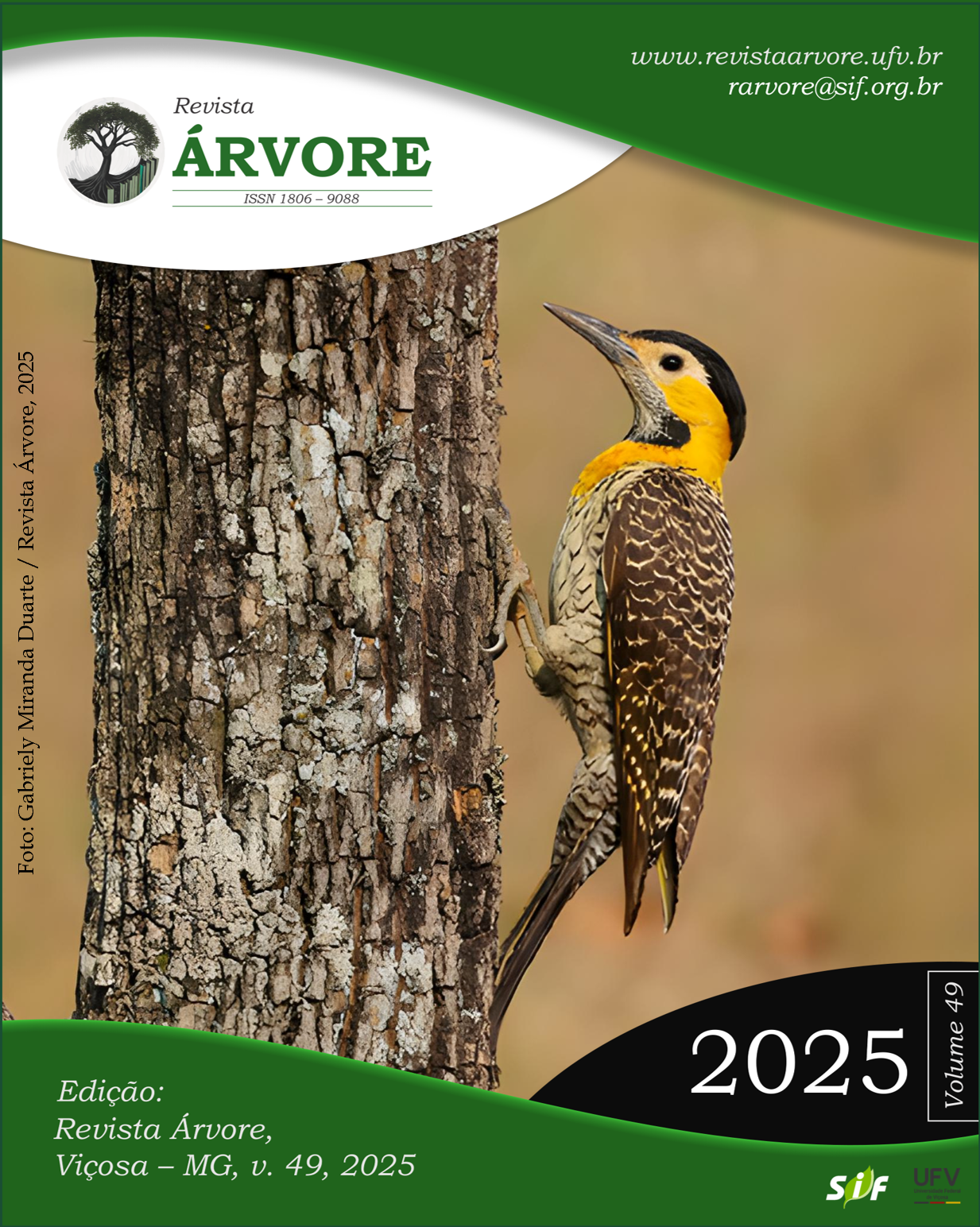RAPD analysis of genetic diversity in Thuja koraiensis Nakai population
DOI:
https://doi.org/10.53661/1806-9088202549263914Keywords:
Critically endangered plant, Genetic mechanism, Molecular markerAbstract
Thuja koraiensis Nakai belongs to the Cupressaceae family, which is an evergreen tree species celebrated for its durable wood. The branches, leaves, and seeds of the plant can be utilized as medicinal components, exhibiting properties such as hemostasis and cough relief. The volatile oil extracted from its branches and leaves functions as a spice with notable bacteriostatic effects. It is a rare and endangered protected species with ornamental, medicinal and aromatic characteristics. However, increasing attention to these resources has led to illegal logging and deforestation of wild T. koraiensis populations, resulting in a sharp decline in both the area and number of these populations, pushing the species to the brink of extinction. Urgent conservation efforts are imperative to protect this valuable species. To reveal the genetic diversity and genetic relationship of T. koraiensis Nakai, it is necessary to provide the basis for exploring the molecular mechanism and conservation of this endangered species. The study utilized Random Amplified Polymorphic DNA (RAPD) markers to analyze genetic diversity and genetic distance of T. koraiensis. The analyses were conducted at 8 distribution sites in Jilin Province, China. A total of 331 loci including 230 polymorphic loci, were amplified by 21 RAPD primers, and the percentage of polymorphic loci (PPL) was 69.49%. The average Nei’s genetic diversity index (H) was 0.1138, and the average Shannon Diversity Information index (I) was 0.1687. The genetic diversity of T. koraiensis is relatively low. The coefficient of genetic differentiation (Gst) among populations was 0.5418, indicating that the majority of genetic variation is partitioned among populations. The gene flow (Nm) between the populations was 0.4228. There was less gene exchange between groups, and the genetic diversity of the species was at a low level. The genetic distance among the 8 populations of T. koraiensis ranged from 0.1126 to 0.2734. Through cluster analysis based on these genetic distances, the 8 populations were classified into two distinct groups. The results showed that there were few polymorphic loci and a low genetic diversity in the population. Genetic diversity among populations was higher than within populations. Genetic differentiation mainly existed among populations, and gene flow was small. This might be an important reason for the endangered status of T. koraiensis.
Keywords: Critically endangered plant; Genetic mechanism; Molecular marker
Downloads
Published
How to Cite
Issue
Section
License
Copyright (c) 2025 Revista Árvore

This work is licensed under a Creative Commons Attribution 4.0 International License.
All authors agreed to submit the work to Revista Árvore and granted the exclusive license to publish the article. The authors affirm that it is an original work and has not been previously published elsewhere. The scientific content and opinions expressed in the article are the sole responsibility of the authors and reflect their opinions, not necessarily representing the opinions of the editorial board of Revista Árvore or of the Society of Forest Investigations (SIF).








